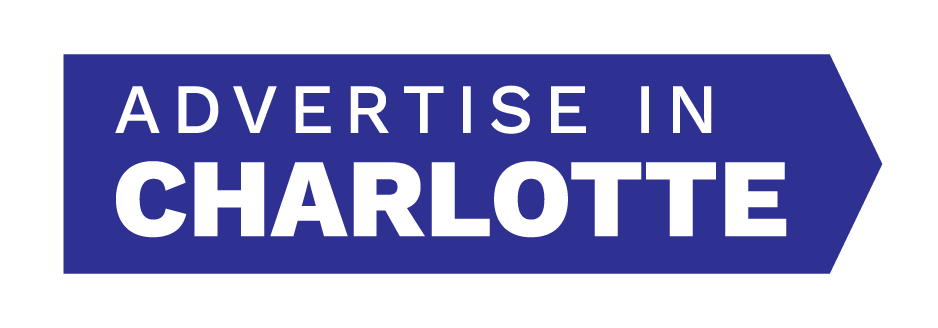In 1922, when WBT became the first radio station in Charlotte, NC, many considered the medium a fad. Even in 1937, a hit song by George Gershwin, Our Love Is Here To Stay, considered radio to be a "passing fancy and in time may go".
Charlotte radio, however, has survived the advent of talking-movies, television, eight tracks, and cassettes in stereo. More recently, radio has withstood a tsunami of digital options including, YouTube, SiriusXM, Pandora, and Spotify.
As the Coronavirus pandemic rolls over into a second year, Charlotte radio has hung tough and not ceded its ground despite listener's shifting lifestyles. This is crucial news for local small business owners who depend on local stations to market their goods and services.
Read More
Topics
best way to advertise,
reach,
return on investment,
corona,
coronavirus,
covid 19,
in-car audio,
recovery,
radio listening,
pandemic,
listening location,
time spent listening,
work from home,
advertising ROI,
commuting
Each week, according to Nielsen, 67.6% of Charlotte consumers watch video programs that aren't delivered over-the-air by local TV stations. They aren't coming from a local cable company or by satellite. Instead, these programs are being streamed directly to viewers via an internet connection.
This type of streamed video content is called OTT (Over-The-Top-Television) or CTV (Connected-Television). These two terms are sometimes are often used interchangeably but do have a subtle difference.
OTT generally means the video is watched on a small device like a computer, tablet, or smartphone. CTV, on the other hand, typically means the content is viewed on a smart-TV or a regular television using a streaming device like a Roku or Amazon stick.
In Charlotte, OTT/CTV has exceeded the weekly reach of local newspapers and streaming audio services such as Pandora and Spotify. The medium is rapidly approaching the reach of local cable and broadcast TV stations.
Read More
Topics
best way to advertise,
small business,
small business owner,
online advertising,
digital advertising,
small business marketing,
small business advertising,
OTT,
streaming media,
CTV,
streaming video,
advertise in charlotte,
internet
Charlotte area residents will begin receiving economic stimulus checks from the Internal Revenue Service as early as today. In all, local consumers will receive more than $3.4 billion in payments.
This infusion of cash into the Charlotte economy was authorized by Congress last week in the American Rescue Plan legislation.
The stimulus relief legislation calls for a one-time payment of $1,400 to single adults. Married couples who filed jointly will receive $2,800 total ($1,400 apiece). Families will get an additional $1,400 for each eligible dependent regardless of age. A family of four could get $5,600 in total payments. Like the second round of stimulus payments, the third round specifically prohibits payments to anyone who died before January 1, 2020.
Many of the stimulus dollars will end up in the wallets of 682,000 Charlotte area homeowners. Based on research from Modernize, a leader in the home improvement and home services industry, 57% of these consumers are planning to spend all or part of their checks on home improvement projects.
Read More
Topics
best way to advertise,
radio advertising,
roi,
return on investment,
advertising ROI,
Remodeling,
contractors,
roofing,
home improvement,
stimulus checks,
replacement windows
Each week, according to Nielsen, more than 1.9 million adult consumers tune-in to a Charlotte radio station. This is significantly more than watch local TV or cable. More than stream video channels like Netflix or Hulu. More than read local newspapers. More than use Facebook or Instagram. More than listen to online audio services like Pandora and Spotify.
But almost everyone knows (including many who advertise on Charlotte radio) that consumers only listen to local radio stations during the day. Right? Wrong!
According to Nielsen, 49% of local consumers listen to Charlotte radio stations each week between 7:00pm and 12:00am. This is a larger audience than Pandora, Spotify, and Instagram combined reach during an entire week.
For Charlotte small business owners, radio's immense nighttime audience offers a unique value proposition.
Read More
Topics
small business,
small business owner,
time of day,
small business marketing,
small business advertising,
advertise on radio,
effective advertising,
radio listening,
advertise on Charlotte radio,
night,
prime-time
Charlotte area consumers are expected to spend upward of $36.8-billion at retail in 2021. This would be, at minimum, a 6.5% jump over 2020. The forecast is based on newly released estimates by the National Retail Federation.
“Despite the continuing health and economic challenges COVID-19 presents, we are very optimistic that healthy consumer fundamentals, pent-up demand and widespread distribution of the vaccine will generate increased economic growth, retail sales and consumer spending,” NRF President and CEO Matthew Shay said.
“From the outset of the pandemic, retailers have gone above and beyond even the most conservative safety guidelines to protect and serve their associates and consumers alike."
To capture the largest possible share of spending growth, local retailers will need to advertise. By the most crucial marketing metrics, the best best way to reach consumers is by advertising on Charlotte radio.
Read More
Topics
consumer spending,
radio advertising,
small business,
small business owner,
small business marketing,
small business advertising,
retail spending,
retail,
retail sales,
retail stores,
retailer
Charlotte area business owners are expected to invest $595-million during 2021 to advertise to consumers connected to the internet. This forecast was produced by Borrell Associates, a company that tracks business advertising expenditures across the country.
These online marketing dollars will be spent on banner advertising, search engine marketing, email, as well as audio and video advertising. This is all to capture the attention of shoppers and buyers as they go about their connected days.
According to Nielsen, 95.8% of adult consumers in the Charlotte area have access to the internet. They connect, primarily, with desktop and laptop computers; smartphones; or tablets.
Ninety-six percent of Charlotte adults spend at least one hour per week online, with most spending at least 10 hours connected.
Read More
Topics
small business,
small business owner,
facebook,
charlotte observer,
online advertising,
digital advertising,
small business marketing,
small business advertising,
facebook advertising,
CTV,
svod,
avod,
online shopping,
advertise on Charlotte radio,
advertise in charlotte,
internet
Since 1922, advertising on Charlotte radio has helped small business owners survive and thrive during times of peril. This includes world wars, natural disasters, depressions, and recessions.
Even during a pandemic, by almost every key marketing metric, radio advertising remains the best way for a Charlotte business to market its goods and services.
To prove the point, here are five statistics that vividly demonstrate the value of advertising on Charlotte radio.
Read More
Topics
best way to advertise,
roi,
reach,
return on investment,
retail spending,
retail,
retail sales,
retail stores,
retailer,
web traffic,
website visitor,
in-car audio,
radio commercials,
radio listening,
listening location,
advertising ROI,
online shopping,
advertise on Charlotte radio,
website traffic
There are 1,148,000 adult women in the Charlotte area. Based on research from the Harvard Business Review, as a consumer group, females account for 70-80 percent of all consumer purchasing through a combination of their buying power and influence. According to Nielsen, this will amount to between $35.9 billion and $41 billion this year.
Overall, according to the Bureau of Labor Statistics and the US Census Bureau:
- Single women across all income brackets spend, on average, $34,817 on goods and service
- Working married women contribute over a third of their families’ incomes
- Over a quarter (29.4%) of wives earned more than their husbands in 2018, an increase from 15.9% in 1981.
Furthermore, according to research published by Forbes:
- The top homebuyers after married couples are single women (18%, double the percentage for single men at 9%).
- Women are 50% more likely than men to regularly watch online how-to videos.
- 94% of women between the ages of 15-35 spend over an hour per day shopping online.
- 70% of travel consumers are women.
- 85% of women say that if they like a brand, they will remain loyal to it.
For Charlotte small business owners to successfully capture a meaningful share of the local female economy requires advertising.
Read More
Topics
best way to advertise,
small business,
small business owner,
small business marketing,
small business advertising,
advertise on radio,
working mothers,
advertise on Charlotte radio,
advertise to women,
market to women,
moms
Charlotte's first radio station, WBT-AM, began broadcasting on March 8, 1922. The process of getting the station's programming from the studio into the home of local listeners required tall-transmitting towers with miles of underground copper wire in the middle of massive fields.
For the next 71 years, this massive investment in real estate, steel, and cooper was the only method of delivering a radio advertiser's message into the ears of Charlotte consumers.
In 1993, however, new technology permitted Charlotte radio stations to augment the reach of their tall towers by simultaneously streaming its over-the-air programming via the internet. This provided local consumers with the choice of listening to their favorite stations on their car radios, clock radios, and boom boxes or on an internet connected devices like computers, smartphones, or tablets.
Today, based on estimates from Edison Research, 11% of listening to local radio stations occurs on a streaming media device. The ability for AM/FM to migrate from their tall towers to internet streaming allows Charlotte radio to reach more local consumers every week than all other media.
Read More
Topics
best way to advertise,
small business,
small business owner,
small business marketing,
small business advertising,
streaming media,
streaming audio,
smart speakers,
google home,
amazon echo,
siri,
advertising on radio,
alexa
There are 33 radio stations in Charlotte. Each provides a unique format of news, sports, music, entertainment, and inspiration. Some stations broadcast in English. Others serve Spanish speakers. Some stations cater to millennials. Others appeal to Baby Boomers. No doubt, there is a local radio station that fulfills the preferences of every listener.
Each week, according to Nielsen, 1.9 million adults tune-in to their favorite Charlotte radio stations. This is more people than watch local TV, cable, or streaming channels. This is more than use Facebook and Instagram. This is more than read newspapers or connect to Pandora and Spotify.
Despite the abundance of Charlotte radio stations to choose between, Nielsen reports that, on average, adult consumers only listen to 3.6 each week. So, which stations do local consumers choose?
Read More
Topics
radio advertising,
millennials,
streaming audio,
smart speakers,
radio commercials,
radio listening,
listening location,
radio formats
Local radio came to Charlotte on March 18, 1922. That's when the Federal Radio Commission granted a license to the Southern Radio Corporation with the randomly assigned call sign, WBT.
From that day, many predicted radio's success would succumb to advances from new technologies. In 1927, the challenge came from talking movies. In the 1940s, the predators were 13-inch TV sets. In the 1970s, it was 8-track and cassette tapes. In the past 20 years, there was a multi-flank attack from iPods, Zunes, YouTube, Sirius, XM, Pandora, Spotify,
So far, all of these challengers have failed. Not even a pandemic has been able to remove radio as a vital force in the life of Charlotte consumers.
Every week, according to Nielsen, more adults tune-in to Charlotte radio than watch TV or cable. Use social media platforms like Facebook or Instagram. Read newspapers. Or, stream music from Pandora or Spotify.
Read More
Topics
best way to advertise,
small business,
small business owner,
small business marketing,
small business advertising,
advertise on radio,
vehicle traffic,
in-car audio,
radio listening,
point of purchase,
mobility,
advertise on Charlotte radio
How important is Twitter to Charlotte area consumers? Yesterday, for instance, the social media platform was mentioned in at least ten articles published by the Charlotte Observer yesterday. Almost every local TV newscast included references to the site as well.
Twitter's outsized presence in the news, however, is enormously disproportional to the importance of the micro-blogging app in the life of Charlotte's consumers.
According to Nielsen, only about 19% of adults in Charlotte use Twitter during the course of a month. This is minuscule compared to other social media platforms like Instagram and Facebook.
Twitter offers 20 different options that Charlotte small business owners can utilize to market their goods and services to local consumers. The platform's minimal reach, however, can hamper the success of any advertising campaign.
Read More
Topics
best way to advertise,
radio advertising,
social media advertising,
instagram,
small business,
small business owner,
facebook,
small business marketing,
small business advertising,
facebook advertising,
twitter
Local radio came to Charlotte on March 18, 1922. That's when the Federal Radio Commission granted a license to the Southern Radio Corporation with the randomly assigned call sign, WBT.
From studios located in the Realty Building located at the corner of Trade and Tryon, WBT began broadcasting music from phonograph records for two hours each day. The station's early broadcasts were heard by about 22,000 people using hand-built radio receivers.
For almost 100 years, small business owners have depended on local radio stations to successfully market their goods and services through depressions, recessions, wars, and natural disasters. Even now, during a pandemic, advertising on Charlotte radio remains a dependable way to make cash registers ring.
Here are five facts every Charlotte Small business owner needs to know about local radio in 2020.
Read More
Topics
best way to advertise,
radio advertising,
small business,
small business owner,
online advertising,
small business marketing,
small business advertising,
advertise on radio,
time spent listening,
online shopping,
advertise on Charlotte radio
Over 95% of Charlotte adults have access to the internet, according to Nielsen. Seventy percent of these consumers spend more than five hours a week connected.
Nielsen reports that Charlotte consumers go online to stay connected to friends and family; research products and services; learn the latest news, and obtain directions to where they are going and know what the weather will be when they get there.
Here are some of the many reasons why Charlotte internet users go online each month
- Social Media: 77%
- Weather: 57%
- Online Banking: 54%
- Maps/Directions: 47%
- Product Reviews: 41%
- Current Events: 35%
- Restaurant Reviews: 30%
- Sports Scores/News: 28%
- Job Search: 19%
- Real Estate: 16%
And, of course, there is shopping. Over the past six months, according to Nielsen, 82% of Charlotte consumers shopped online for every imaginable product and service including, cars, golf clubs, office supplies, wedding rings, mattresses, tires, medicine, shoes, socks, and eyeglasses.
To reach local consumers while they are online, Charlotte businesses will spend $587 million for digital advertising in 2020, according to Borrell Associates. Here is how the money is being spent:
Read More
Topics
radio advertising,
social media advertising,
small business,
small business owner,
online advertising,
small business marketing,
small business advertising,
OTT,
social media,
e-commerce,
wedding,
CTV,
email marketing,
email advertising,
online shopping
As the pandemic rages on, advertising is no longer a luxury for the
92,000 small businesses in the Charlotte-Concord-Gastonia, NC-SC metro area
.
Advertising has become a tool for survival.
As cash becomes precious, though, Charlotte area small business owners and retailers need to ensure that every dollar spent on advertising has a significant effect on sales.
To make the best advertising choices, thousands of local business owners have sought advice and direction from
www.AdvertiseInCharlotte.om. Here is a recap of the top 5 articles read on the site during 2020.
Read More
Topics
radio advertising,
small business,
small business owner,
television advertising,
newspaper advertising,
newspaper readers,
small business marketing,
small business advertising,
OTT,
television,
pay-tv,
cable television,
radio listening,
CTV,
svod,
avod,
cable tv,
2020
There are 676,000 adults in the Charlotte area who have earned a four-year college or postgraduate degree, according to research from Nielsen. A study from the Federal Reserve indicates that these educated consumers have been least affected by the economic consequences of the pandemic.
"While the labor market disruptions have affected workers in a wide set of industries and occupations, those without a college degree have experienced the most severe impact," say Mary C. Daly, Shelby R. Buckman, and Lily M. Seitelman authors of The Unequal Impact of COVID-19 in the Economic Letter published by the Federal Reserve of San Francisco.
Although the unemployment rate increased among consumers of every education level in late March when the Governors of North Carolina and South Carolina lockdown their states to slow the spread of the Coronavirus, the smallest increase was among those with bachelor or postgraduate degrees, according to the Bureau of Labor Statistics.
Seven months later, job recovery among those with college degrees is closer to pre-pandemic levels than consumers with lower levels of educational attainment.
Many small business owners have seen the correlation between advertising and survival during the economic crisis inflicted by the pandemic. With precious few dollars to invest, it is crucial that every advertisement reaches consumers who have disposable income to buy. Right now, the most likely spenders are customers with college degrees.
By key advertising metrics, the best way to reach consumers with higher education is on Charlotte radio.
Read More
Topics
best way to advertise,
radio advertising,
small business,
small business owner,
small business marketing,
small business advertising,
advertise on radio,
radio commercials,
radio listening,
charlotte radio,
advertising on radio,
college graduates,
education
There is cheerful news for small business owners from Davidson to Matthews and every city and town in between.
Based on the latest projections from the National Retail Federation, holiday sales are expected to grow 3.6%-5.2% over 2019. This means despite the economic ravages of the pandemic, Charlotte area shoppers will be spending between $6.4 and $6.5 billion on gifts and other trappings of the season.
The NRF forecast is based on an economic model that takes into consideration a variety of indicators including employment, wages, consumer confidence, disposable income, consumer credit, previous retail sales and weather. NRF defines the holiday season as November 1 through December 31. Numbers forecast by NRF may differ from other organizations that define the holiday season as a longer period or include retail sectors not included by NRF, such as automobile dealers, gasoline stations and restaurants.
"Consumers have shown they are excited about the holidays and are willing to spend on gifts that lift the spirits of family and friends after such a challenging year," says NRF President and CEO Matthew Shay. "We expect a strong finish to the holiday season."
“Given the pandemic, there is uncertainty about consumers’ willingness to spend, but with the economy improving most have the ability to spend,” NRF Chief Economist Jack Kleinhenz said. “Consumers have experienced a difficult year but will likely spend more than anyone would have expected just a few months ago."
Read More
Topics
consumer spending,
small business,
small business owner,
television advertising,
roi,
return on investment,
small business marketing,
small business advertising,
retail spending,
retail,
television,
retail sales,
retail stores,
retailer,
cable television,
holiday advertising,
holiday shopping,
christmas,
advertising ROI,
consumer confidence
Charlotte shoppers are expected to spend a record $6.7 billion online in 2020, based on the most recent projections from eMarketer. This would represent year-over-year growth of 32.4%.
During the same period, according to eMarketer, receipts at brick-and-mortar stores have contracted by 3.2%. Overall, excluding gas and auto sales, e-commerce will account for 20.6% of all retail sales this year.
The Coronavirus pandemic is credited with this seismic shift in shopping behavior as consumers continue to avoid stores and opt for online shopping.
“We’ve seen e-commerce accelerate in ways that didn’t seem possible last spring, given the extent of the economic crisis,” said Andrew Lipsman, eMarketer principal analyst at Insider Intelligence. “While much of the shift has been led by essential categories like grocery, there has been surprising strength in discretionary categories like consumer electronics and home furnishings that benefited from pandemic-driven lifestyle needs.”
Even before the onset of the pandemic, 80.8% of Charlotte consumers had bought goods online over the prior six months, according to Nielsen research. Purchases included clothing, health & beauty products, travel reservations, books, furniture, and groceries.
Read More
Topics
best way to advertise,
radio advertising,
online advertising,
retail spending,
retail,
retail sales,
retail stores,
retailer,
web traffic,
website visitor,
attrubution,
e-commerce,
advertise on radio,
online shopping
There is positive news for the 92,000 small businesses in the Charlotte-Concord-Gastonia, NC-SC metro area. A majority of consumers say they are ready to start shopping again.
A lifestyle survey just released from Nielsen indicates 53% of Americans believe that despite the continuing pandemic, life is beginning to normalize, and they are likely to resume typical activities. Nielsen refers to this majority as "Ready-To-Go".
According to the survey, Ready-To-Go consumers now perceive less risk, feel safer, and believe their cities are emerging from crisis.
The key takeaway for Charlotte small business owners is that Ready-To-Go consumers are significantly more likely to start shopping within 30 days than the total population. These buyers, according to Nielsen, are looking to spend on home improvement, professional services, auto parts/repair, shopping, food & dining, and travel.
To capture a meaningful share of the money Ready-To-Go consumers will be spending requires local small business owners to advertise. By almost every metric, advertising on Charlotte radio is the best advertising option.
Read More
Topics
consumer spending,
radio advertising,
small business,
small business owner,
roi,
return on investment,
small business marketing,
small business advertising,
retail spending,
retail,
retail sales,
retail stores,
retailer,
advertise on radio,
advertising ROI,
consumer confidence
Every week, according to Nielsen, significantly more consumers are reached by local radio than by Charlotte TV.
For Charlotte small business owners whose marketing budgets have been ravaged by the pandemic, though, the question is which of these media can provide the best return for their advertising investments. An ROI study conducted by Nielsen and commissioned by Cumulus Media | Westwood One provides a conclusive answer.
Between April 30 and May 27 of this year, Nielsen analyzed the sales results of a major retailer who conducted an advertising campaign on both radio and television during that period.
Using their Portable People Meter panel of 80,000 consumers, Nielsen measured the purchase behavior of consumers who were exposed to the advertiser's commercials on both radio and television. To learn more about the methodology, click here.
The result of the study indicates that the money invested in radio advertising had a much stronger return than the money spent on TV.
Here are the key findings of the ROI study:
Read More
Topics
radio advertising,
small business,
small business owner,
television advertising,
roi,
return on investment,
small business marketing,
small business advertising,
retail spending,
retail,
television,
retail sales,
retail stores,
retailer,
cable television,
advertising ROI
Before we explain AVOD, it is important to understand SVOD.
Charlotte small business owners may not be familiar with SVOD, but chances are they let it into their homes and onto their phones.
SVOD is the abbreviation for Subscription Video On Demand. That is the collective name for streaming networks like Netflix, Hulu, Disney+, and Amazon Prime. For a monthly fee, these services provide commercial-free access to TV shows, original content, and movies.
These SVOD networks are delivered to viewers' phones, tablets, computers, and smart-TVs via the internet and not over-the-air or cable systems.
SVOD makes up a significant part of what advertisers refer to as OTT (Over-The-Top-Television) and CTV (Connected-Television). OTT/CTV is video-programming content that viewers can only watch on smartphones, tablets, computers, smart-TVs, Amazon Firesticks, and Roku Sticks. Nielsen reports that 92.3% of Charlotte adults own at least one of these devices.
Read More
Topics
best way to advertise,
small business,
small business owner,
television advertising,
small business marketing,
small business advertising,
OTT,
streaming media,
television,
cable television,
CTV,
streaming video,
svod,
avod
There are more than 1,700,000 car radios in the Charlotte area. On March 30, though, many of these devices became quarantined along with their owners. That was the day when the Governor of North Carolina shut down the state to slow the spread of COVID-19.
According to the Apple Mobility Index, the Governor's public-safety order caused traffic on Charlotte roadways to plummet to 65% of pre-pandemic levels.
By the beginning of July, however, the AMI indicates that traffic in Charlotte began to exceed pre-Covid levels. The surge in mobility is due, in part, to work-from-home, furloughed, and laid-off employees returning to their workplaces.
According to Nielsen, during the week of April 30, only 39% of adults with jobs were working outside-the-home. During the week of October 1, though, that number had expanded to 61%.
Read More
Topics
consumer spending,
small business,
small business owner,
small business marketing,
small business advertising,
in car aduio,
vehicle traffic,
effective advertising,
radio listening,
consumer confidence,
share of ear,
point of purchase,
mobility
Now would be a good time for Charlotte small business owners to consider increasing their advertising expenditures.
There are just over 92,000 small businesses in the Charlotte-Concord-Gastonia, NC-SC metro area, according to the U.S. Census Bureau. Based on some promising retail sales data, the Overall Sentiment Index among local small business owners has improved 28.5% between April 26 and October 12 of this year.
The best news for business owners came from the Commerce Department on Friday when it reported that retail sales rose by a seasonally adjusted 1.9% in September. This is the fifth straight month of gains.
Local retail gains are being powered by improving consumer confidence and a large pool of cash sitting in people's savings accounts.
The Conference Board's Consumer Confidence Index jumped to 101.8 in September, up 17.9% from August. This means consumers are in the mood to spend. Fortunately, they have money in the bank to do so.
Read More
Topics
consumer spending,
small business,
small business owner,
millennials,
roi,
return on investment,
small business marketing,
small business advertising,
retail spending,
retail,
retail sales,
retail stores,
retailer,
millennial parents,
advertising ROI,
consumer confidence,
purchase intent
Charlotte area business owners are expected to spend $51.3 million on newspaper advertising in 2020. This will be 31% fewer dollars than were spent in 2019, according to a study by Borrell Associates, a company that analyzes local media expenditures across the country.
Of course, the pandemic is part of the reason advertising revenues have plummeted at Charlotte newspapers. But, the more significant factor is the sustained erosion of readership.
For example, between October 2017 and March 2019, the Monday-Saturday circulation of the Charlotte Observer has decreased by 35%. The Sunday edition suffered a 34% decrease.
Among all advertising media available to small business owners, newspaper's ability to reach adult consumers now lags significantly behind Charlotte radio, cable, broadcast TV, and social media.
Read More
Topics
best way to advertise,
small business,
small business owner,
newspaper advertising,
charlotte observer,
newspaper readers,
small business marketing,
small business advertising
Charlotte business owners are forecast to invest $20 million in 2020 on email advertising campaigns to market their goods and services, according to Borrell Associates, a company analyzes ad spending by local companies across the country.
Borrell predicts overall spending on email marketing by Charlotte companies is expected to be down by nearly 12% versus last year, primarily due to the pandemic. Regardless, now might be a good time for small business owners to consider engaging current and prospective customers with emails.
"Email is on-fire right now," says Jay Schwedelson, President of Worldata, a company that builds and measures email marketing success for Fortune 100 companies. "Since the start of the pandemic, consumers are spending 22% in their email inbox than they were in January."
Mr. Schwedelson speculates the increase in inbox time is due, in part, to many consumers working from home and depending more-and-more on written communication from co-workers and customers.
"It could also be that consumers are finding comfort in their email boxes rather than from all the noise on social media."
"Either way, email marketing is performing better than ever," says Mr. Schwedelson. "We've studied more than 200 million emails sent over the past 30 days to both business-to-consumer and business-to-business. We found that B2C open rates are up 16% since January, while B2B open rates are 25% higher."
Read More
Topics
inbox,
open rates,
click-through rates,
email marketing,
email advertising,
CTR,
Subject Line
There are over 2.2 million adult consumers in the Charlotte area. Collectively, in a typical year, these shoppers would generate $49.6 billion in retail sales. This money would be spent on cars, shoes, fast-food, entertainment, groceries, mattresses, adult beverages, haircuts, makeup, and an over-abundance of other of goods and services. Their money was being spent on both the essential and the frivolous.
The way Charlotte consumers spend money changed radically in March as COVID-19 began to spread. Six months into the pandemic, shopping strategies are about to change again.
It started with panic buying. Consumers began ignoring prices and were paying what was ever necessary to ensure the safety, health, and comfort of their families. According to Nielsen, this sudden spike in demand caused widespread price increases. To put it in perspective, retail prices shot-up in 64% of all product categories stocked in grocery stores.
Almost immediately, advertising messages from local retailers shifted from promises of low prices and convenience to product availability and shopper safety.
Based on new research from Nielsen, consumers' shopping strategies are beginning to shift again. This will require Charlotte small business owners and retailers to also change their advertising strategies, too.
Read More
Topics
small business,
small business owner,
roi,
return on investment,
small business marketing,
small business advertising,
retail spending,
retail,
retail sales,
retail stores,
retailer,
corona,
coronavirus,
covid 19,
pandemic,
advertising ROI
Charlotte area shoppers are expected to spend over $9.8 billion during this year's November-January holiday season. This estimate is based on a forecast issued last week by Deloitte, the world's largest business accounting firm. This spending represents a 1-1.5% increase versus the same period last year.
How can Charlotte small business owners best compete for a significant share of the 2020 holiday expenditures?
"Retailers who prioritize customers’ desires for a safe, efficient shopping journey will be the big winners this year," writes Sean Gundz on www.ChainstoreAge.com.
"The holiday season is always a stressful time for retailers, especially the ones that make the majority of their revenue in the short window between Thanksgiving and Christmas," says Mr. Gundz.
"Within this window is Black Friday, which, along with other big holiday sales events, are going to look a lot different this year. Retailers must accommodate COVID-19 mandates that enable social distancing, minimize surface touching, and actually restrict foot traffic in their facilities. All while trying to optimize sales."
Mr. Gundz says there is no single way to deal with the challenges facing retailers this holiday season. He does offer five tips, though, that every Charlotte retailer can employ.
Read More
Topics
small business,
small business owner,
millennials,
small business marketing,
retail spending,
retail,
parent,
retail sales,
retail stores,
retailer,
millennial parents,
holiday advertising,
holiday shopping,
christmas
Charlotte area consumers are expected to spend $72 million on Halloween related activities in 2020, according to information from the National Retail Federation. This would be a slight 2.3% decrease from 2019. This is proof of the holiday's strong resistance to the pressures of a pandemic economy.
Based on data from the NRF's annual survey conducted by Prosper Insights & Analytics, more than 1.2 million Charlotte adults plan to participate in Halloween-related activities. Among those celebrants, safe at-home activities ranked highest: 53 percent plan to decorate their homes, 46 percent plan to carve a pumpkin, and 18 percent will dress up their pet.
“Consumers continue to place importance on celebrating our traditional holidays, even if by untraditional standards,” NRF President and CEO Matthew Shay said. “Retailers are prepared to meet the increased demand for seasonal décor, costumes, and other items that allow families the opportunity to observe Halloween safely.”
To earn a large share of Halloween spending in 2020, Charlotte small business owner will need to advertise to let consumers know their stores are open, stocked, and ready. By any metric, advertising on Charlotte radio is the best way to reach holiday shoppers.
Read More
Topics
small business,
small business owner,
millennials,
small business marketing,
small business advertising,
retail spending,
retail,
parent,
children,
retail sales,
retail stores,
retailer,
millennial parents,
halloween,
working mothers,
holiday advertising
There are more than 1,700,000 vehicles registered in the Charlotte area. Many need new windshield wipers, shocks, struts, brakes, air filters, ignition coils, and the hundreds of other items that fill the shelves of local auto part dealers.
Despite the pandemic induced slowdown, business at auto parts stores has grown nearly 13% since February, according to the US Census Bureau.
This explosive growth in auto parts sales directly relates to the average age of cars on Charlotte's roads.
"Per the latest study from IHS Markit, the current combined average age of vehicles has hit a record of 11.9 years," Rimmi Singhi wrote this week on NASDAQ.com. "The aging vehicles are a boon to auto parts, replacement, and repair companies. In a bid to ensure long-term functioning of the aging vehicle population, customers are making investments to replace faulty vehicle parts and components."
Also contributing to the rapid aging of cars on the road is the current demand for used versus new vehicles. According to the Bureau of Economic Analysis, the personal consumption expenditures (PCE) for used cars is 25% higher in August than it was during the same month last year.
Read More
Topics
best way to advertise,
radio advertising,
small business,
small business owner,
small business marketing,
small business advertising,
retail spending,
retail,
used vehicles,
automotive,
used cars,
used trucks,
retail sales,
retail stores,
retailer,
auto parts
There are approximately 335,000 households in the Charlotte area with existing mortgages, according to the US Census Bureau, American Housing Survey. The median amount owed on these homes is $123,000.
Yesterday, there was extraordinary news for many of these borrowers and for Charlotte area banks, credit unions, and mortgage companies
According to The Federal Home Loan Mortgage Corporation (Freddie Mac), mortgage rates have hit an all-time low of 2.86%.
With interest rates at this new level, 20 million American homeowners can now refinance their existing mortgage, according to Black Knight, a data analytics company specializing in homeownership life cycles.
By refinancing an existing mortgage, a Charlotte area homeowner could considerably reduce the length of their loan or lower the amount
of their monthly payments.
Local banks, credit unions, and mortgage companies create a great deal of revenue from refinancing.
Generally, a lender can expect to earn two to five percent of the loan principal amount in closing costs, according to BankRate.com. For a $200,000 mortgage refinance, for example, closing costs could generate between $4000 and $10,000.
For local financial companies to claim a significant share of the expanding refi market requires advertising. By any metric, advertising on Charlotte radio is the most effective way to reach homeowners.
Read More
Topics
best way to advertise,
radio advertising,
homeowners,
mortgage,
mortgage rates,
refinance,
bank,
mortgage broker,
advertise on radio,
credit unions,
banks
On September 4, the political advertising window opened on Charlotte television and radio stations. This is a 60 day period leading up to a general election when broadcast stations licensed by the Federal Communication Commission are obligated to offer candidates for national office the opportunity to buy commercials at the lowest unit rate (LUR).
For example, if a high-frequency advertiser like McDonald's earns the lowest rates on a particular Charlotte radio station during morning drive-time, then any candidate for federal office must, during the 60-day political window, be offered the same rate for morning drive time on that station, regardless of frequency.
If, however, the McDonald's rate is contingent on the radio station's ability to pre-empt commercials without notice, then qualified candidates must agree to identical terms to receive the same rate.
To facilitate the purchase of commercials on Charlotte radio, stations will supply candidates with a political rate-card. This card will show the LUR by time of day and by preemption parameters.
Here are other important facts about political advertising on Charlotte radio.
Read More
Topics
radio advertising,
political advertising,
issue advertising,
political rates,
lowest unit rate,
advertising on radio,
LUR
Advertising on Charlotte television and cable is becoming less attractive to local business owners as viewers rapidly defect to alternative video entertainment sources including, Netflix, YouTube, Hulu, Amazon and Disney+.
Collectively these streaming services are referred to as Over-The-Top Television (OTT) and Connected-TV (CTV). Viewers can only access this OTT and CTV content via smartphone, tablets, computers, smart-TVs, Amazon Fire Sticks, and Roku Sticks, Nielsen reports that 92.3% of Charlotte adults own at least one these devices. Furthermore, they are using them.
According to Nielsen, OTT and CTV networks now reach 43.4% of all Charlotte consumers every week.
Read More
Topics
best way to advertise,
radio advertising,
small business,
small business owner,
television advertising,
small business marketing,
small business advertising,
OTT,
streaming media,
television,
pay-tv,
cable television,
advertise on radio,
CTV,
streaming video
New data from the US Census Bureau has optimistic news for Charlotte companies that sell business-to-business.
There are approximately 57,000 businesses in the Charlotte area, according to the Census Bureau. Indeed, many of these businesses have suffered since the onset of the Coronavirus, especially in April.
Census information is now showing positive indicators that the fortunes of area companies are improving. This includes those with 500 or fewer employees. These small businesses account for 91% of all Charlotte area firms.
During the week of April 26, 31% of Charlotte area small businesses reported temporary closures. By July 1, the number dropped to 7%.
Also, during that same week, 74% of Charlotte small business owners were reporting decreases in revenue versus the prior week. By the end of June, that number fell by almost half.
In both June and July of this year, national data shows all retail and food services spending significantly outperformed the prior year by between two and three percent.
As the business climate improves in the Charlotte area, the fortunes of B2B companies will accelerate as well. These include those businesses that sell office supplies, restaurant supplies, cleaning services, legal services, accounting services, transportation services, banking services, technology, and commercial real estate.
Read More
Topics
best way to advertise,
small business,
small business owner,
roi,
return on investment,
small business marketing,
small business advertising,
charlotte radio,
b2b advertising,
business-to-business advertising
Before COVID-19, most listening to Charlotte radio happened outside the home. Consumers were tuning-in to their favorite stations from the car on the way to their job. Then, they tuned-in when they arrived at work. They listened again during the commute back home.
Nielsen recently surveyed consumers who worked from home before and during the novel coronavirus outbreak. The results show, as of June, 66% of respondents now work from home full-time as a consequence of the pandemic.
As consumers are compelled to work from their houses and curtail their commutes, the share of at-home listening to Charlotte radio has grown by 19%, according to Nielsen.
Read More
Topics
best way to advertise,
radio advertising,
corona,
coronavirus,
covid 19,
advertise on radio,
radio listening,
pandemic,
listening location,
time spent listening,
work from home
Charlotte radio reaches more area adults every week than any other medium. During a typical seven-day period, according to Nielsen, 1.9 million local consumers tune-in to their favorite AM and FM stations. This is significantly more than those who watch broadcast television, subscribe to pay-TV, browse social media, read a newspaper, or stream music from Pandora and Spotify.
Radio's omnipresence in the life of Charlotte consumers is remarkable, considering today is the medium's 100th birthday.
Read More
Topics
best way to advertise,
radio advertising,
roi,
reach,
return on investment,
advertise on radio,
radio commercials,
first radio station in Charlotte,
radio history
Despite all of the media options available for small business owners to market their goods and services, advertising on Charlotte radio is still the best way to reach local consumers.
Adult consumers are spending 741 minutes per day consuming electronic media, according to a new study by Nielsen. This is 7.8% more time than they spent last year and 11.2% more than in 2018.
The typical daily media diet consists of radio, live TV, time-shifted TV, DVD/Blue-ray devices, game consoles, internet-connected devices, as well as internet via computers, smartphone apps, and tablet apps.
According to Nielsen, despite all of these media options, local radio reaches the most consumers every week.
Read More
Topics
best way to advertise,
radio advertising,
small business,
small business owner,
roi,
reach,
return on investment,
small business marketing,
small business advertising,
retail spending,
retail,
reach & frequency,
retail sales,
retail stores,
retailer,
advertise on radio,
advertising reach,
effective advertising
There is good news for Charlotte retailers and restaurants.
As a result of the pandemic, one-third of consumers indicate they will pay a premium for local brands and products, according to a recent study by Ernst & Young
However, before consumers will buy from a local business in Matthews, Davidson, Rock Hill, or any town in-between, they must know they can do so without risking their health.
Advertising is the only practical way to let local shoppers and diners in the Charlotte area know about the precautions and practices your small business has taken to reduce potential health threats.
Read More
Topics
best way to advertise,
small business,
small business owner,
small business marketing,
small business advertising,
retail spending,
retail,
restaurant,
retail sales,
retail stores,
retailer,
corona,
coronavirus,
covid 19
During July, 943,600 adult radio-listeners spent two hours per day listening to their favorite Charlotte radio stations, according to Nielsen. Although local consumers had spent fewer minutes listening at the onset of the pandemic, the current time tuned-in remains unchanged compared to a year ago.
Some advertising experts had predicted that as consumers spent more time at home because of COVID-19 concerns, the hours devoted to radio listening would decrease. That, however, was not the case.
In July of 2019, according to Nielsen, 29.6% of radio listening occurred at home. During July of this year, in-home listening jumped to 35.2%. Despite the reduction in out-of-home activities, though, consumers still spent the exact amount of time listening to Charlotte radio.
Read More
Topics
best way to advertise,
radio advertising,
small business,
small business owner,
spotify,
pandora,
small business marketing,
small business advertising,
corona,
coronavirus,
covid 19,
advertise on radio,
sirius/xm,
podcasts
More than one-third of Charlotte area households are 'cord-cutters' or 'cord-nevers'. This means, they have fired their cable or satellite television providers or never subscribed at all. Instead, these consumers are choosing to find their video entertainment elsewhere.
The number of local homes that subscribe to pay-TV services began plummeting in 2013. New technologies has allowed viewers to bypass cable and satellite for more compelling content at lower prices. These cord-cutters now depend on services like Netflix, Hulu, Disney+, and Amazon Prime to fill their multiple screens.
For many years, Charlotte small business owners have been investing a significant portion of their advertising budgets into cable-TV. The medium had proven to be a low-cost, high-reach alternative to buying commercial on over-the-air television stations.
Now, because of cord-cutting, there are 748,000 adult consumers with unconnected TVs. This profoundly diminishes the value proposition of advertising with local cable systems.
There is a powerful and affordable solution, however, for small business owners to reach both the diminishing cable audience and the expanding number of cord-cutters.
Read More
Topics
best way to advertise,
radio advertising,
small business,
small business owner,
television advertising,
small business marketing,
small business advertising,
television,
pay-tv,
cable television,
advertise on radio,
radio commercials,
cord-cutter,
cord-never,
satellite TV
Based on projections from the National Retail Federation, Charlotte area parents are expected to spend $288 million to equip K-12 kids for the upcoming school year. If so, then this shopping spree will be 29% bigger than last year's and the biggest take since 2012.
“By any measure, this is an unprecedented year with great uncertainty, including how students will get their education this fall whether they are in kindergarten or college,” NRF President and CEO Matthew Shay says.
“Most parents don’t know whether their children will be sitting in a classroom or in front of a computer in the dining room, or a combination of the two. But they do know the value of an education and are navigating uncertainty and unknowns so that students are prepared."
Along with pencils, paper, pens, and knapsacks, the NRF survey says 63 percent of K-12 families expect to buy computers and other electronics this year, up from 54% last year, and they expect to spend more at an average $274.44, up from $203.44 last year. The $71 difference accounts for the largest share of the overall increase in average spending of almost $93.
Also, because many parents are unsure if learning will take place at school or at home, back-to-school spending this year is expected to include home furnishings such as desks, chairs, and lamps.
To claim a meaningful share of this year's booming back-to-school economy, local retailers will need to advertise to let parents know that their stores are open, it is safe to shop, and the needed supplies are in stock.
By any metric, the best way to reach these parents is on Charlotte radio.
Read More
Topics
radio advertising,
small business,
small business owner,
millennials,
small business marketing,
small business advertising,
retail spending,
retail,
store traffic,
retail sales,
retail stores,
retailer,
advertise on radio,
back to school,
millennial parents










































